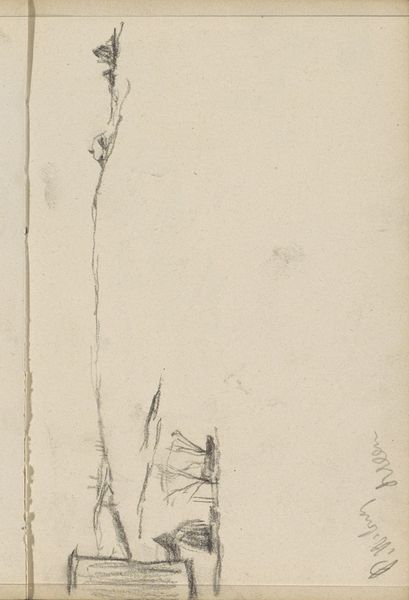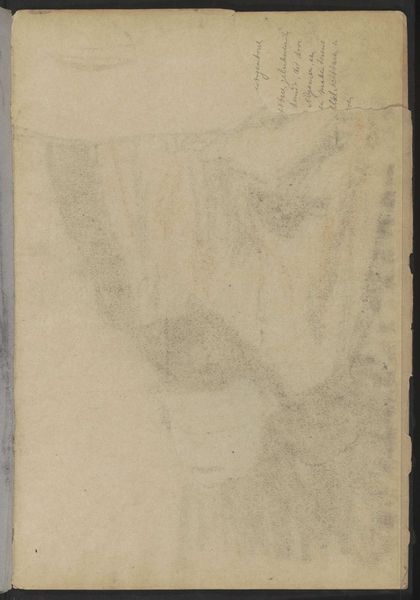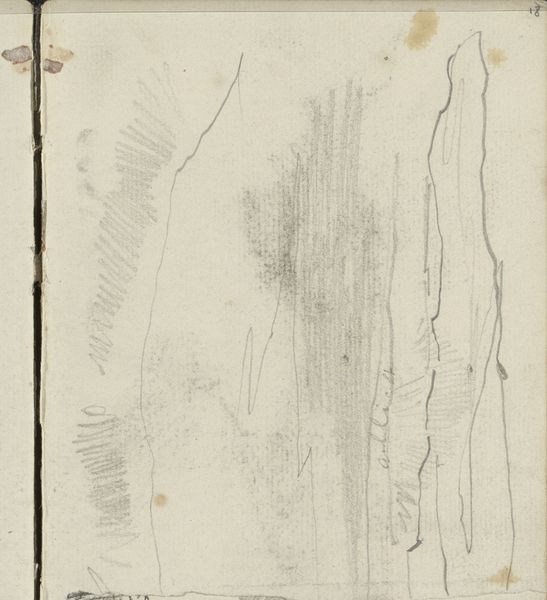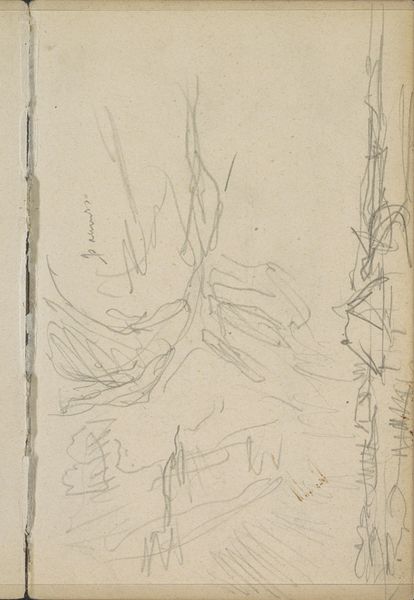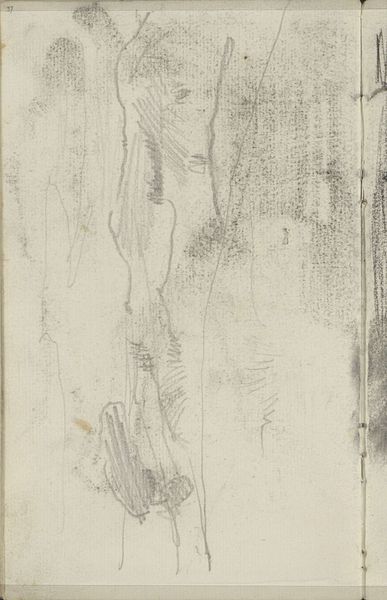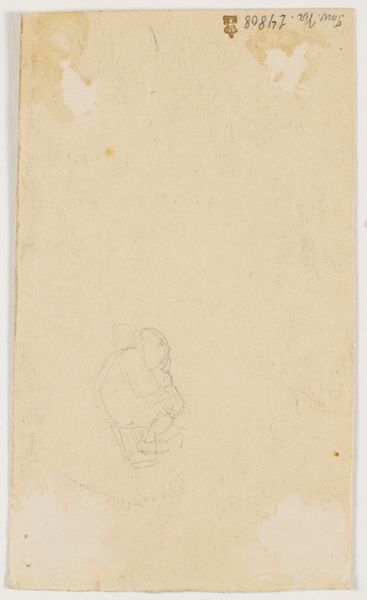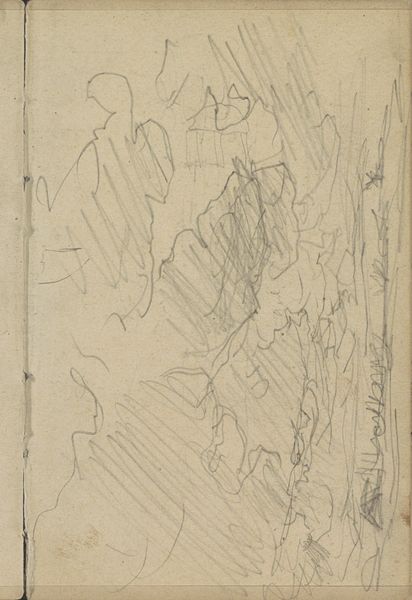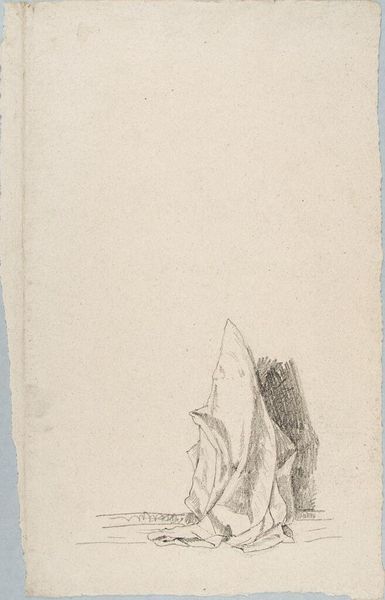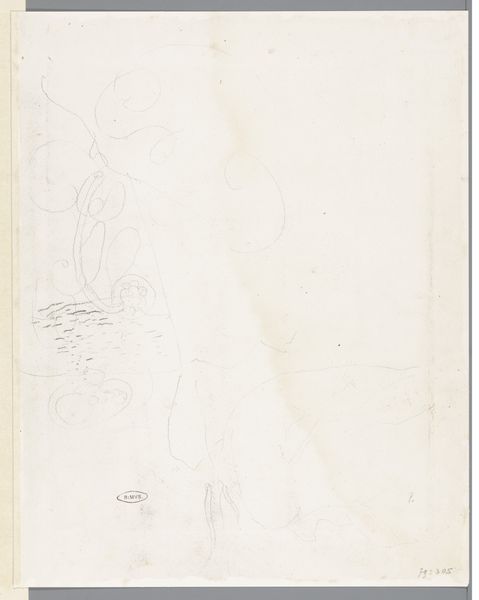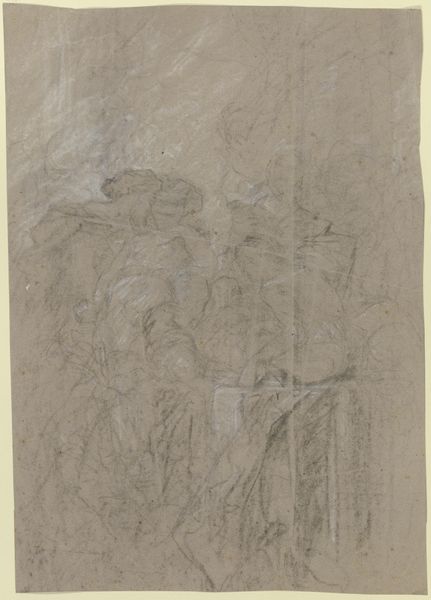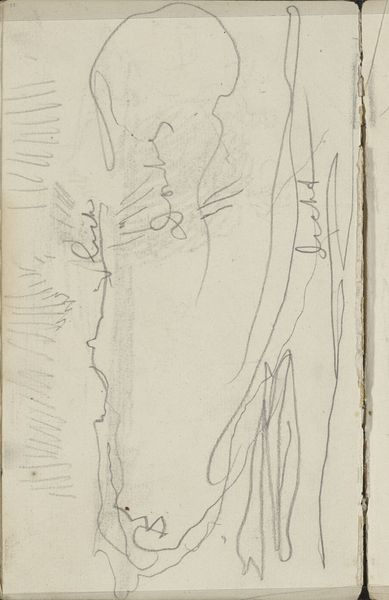
drawing, paper, pencil
#
drawing
#
paper
#
romanticism
#
pencil
#
history-painting
#
academic-art
Dimensions: 88 mm (height) x 59 mm (width) (bladmaal)
Editor: This pencil drawing on paper, titled "Fragment af opstandelsesscene" by Martinus Rørbye, was created in 1847. The visible figures seem to be recoiling or mourning. What’s your take on its historical context and potential reception, especially considering its incomplete nature? Curator: Well, seeing a sketch like this really emphasizes how deeply entwined art was with both religious and academic structures in 19th-century Denmark. Rørbye, a product of his time, navigated a world where state-sponsored art and the church played a powerful role in shaping cultural values. Editor: How so? Curator: The incompleteness could suggest a study, or a piece never intended for public display, a glimpse into the artist’s private exploration of religious themes, right? Think about the institutional forces that dictate what stories get told, and how they get told. Were these figures of faith meant to inspire, or were they tools to enforce societal norms? And how would this sketch, had it become a finished work, contribute to or challenge the established order? Editor: That’s a really interesting angle. It makes you wonder about the agency of the artist, whether he felt constrained or empowered by those structures. Curator: Exactly! Even fragments can reveal volumes about the artist’s position within his society, and the museum’s position now to highlight the changing attitude towards how such themes are understood. The very act of us studying it in a museum now alters its meaning, shifting it from private study to public discourse. Editor: So, seeing this fragment, we can delve into a richer, more complex understanding of the period, considering both artistic intent and socio-political implications. Curator: Precisely! This piece serves as a looking glass to question the narrative and legacy promoted at that time. It prompts a question of our own cultural consumption.
Comments
No comments
Be the first to comment and join the conversation on the ultimate creative platform.
